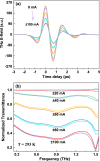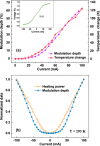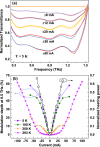Topological-insulator-based terahertz modulator
- PMID: 29044164
- PMCID: PMC5647436
- DOI: 10.1038/s41598-017-13701-9
Topological-insulator-based terahertz modulator
Abstract
Three dimensional topological insulators, as a new phase of quantum matters, are characterized by an insulating gap in the bulk and a metallic state on the surface. Particularly, most of the topological insulators have narrow band gaps, and hence have promising applications in the area of terahertz optoelectronics. In this work, we experimentally demonstrate an electronically-tunable terahertz intensity modulator based on Bi1:5Sb0:5Te1:8Se1:2 single crystal, one of the most insulating topological insulators. A relative frequency-independent modulation depth of ~62% over a wide frequency range from 0.3 to 1.4 THz has been achieved at room temperature, by applying a bias current of 100 mA. The modulation in the low current regime can be further enhanced at low temperature. We propose that the extraordinarily large modulation is a consequence of thermally-activated carrier absorption in the semiconducting bulk states. Our work provides a new application of topological insulators for terahertz technology.
Conflict of interest statement
The authors declare that they have no competing interests.
Figures




References
-
- Ishigaki K, et al. Direct intensity modulation and wireless data transmission characteristics of terahertz-oscillating resonant tunnelling diodes. Electronics Letters. 2012;48:582–583. doi: 10.1049/el.2012.0849. - DOI
-
- Williams GP. Filling the thz gap—high power sources and applications. Reports on Progress in Physics. 2005;69:301. doi: 10.1088/0034-4885/69/2/R01. - DOI
Publication types
LinkOut - more resources
Full Text Sources
Other Literature Sources
Miscellaneous

